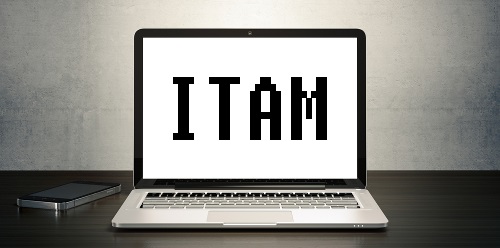
Companies have a lot to gain by maintaining good control over their IT assets. They can avoid massive unplanned expenses, increase productivity and provide easy access to information for decision making.
When designing an IT Asset Management (ITAM) program, Brian Hollandsworth, Product Marketing Manager, ServiceNow, advises to keep these ten tips in mind:
1. Someone has to be responsible
Every successful project starts with people, then process, then technology. Since ITAM touches every part of your business, you must have a leader who has executive sponsorship and the support of all stakeholders who knows how to bring people, process, and technology together into a working solution.
2. Circle of life
Like most things in life, assets follow a lifecycle: plan, procure, deploy, manage, and retire. Plan what type of assets you need to support your business, negotiate contracts with vendors to provide these assets, make the assets available for use, track where they go and log any activity that happens while in use, and finally retire them when they are no longer needed. Best practice publications available from the International Association of Information Technology Asset Managers (IAITAM) provide a wealth of information on lifecycles and more.
3. One source of truth
Having spreadsheets scattered around various computers, network drives, and SharePoint is not an effective way to do company-wide asset management. To be successful, it’s important to agree on a common asset repository to be your organisation’s one source of truth. Ideally, this repository is linked to a service management system capable of tracking assets throughout their lifecycle to keep records current.
4. Visibility through metrics and reporting
You can’t manage what you can’t measure and you can’t measure what you can’t see. When selecting a tool for your ITAM program, confirm it can collect the metrics you need to measure the performance of your processes. Furthermore, verify you can get the information out of the system easily into dashboards anyone can configure. This is the best way to ensure you have accurate information when making strategic decisions.
5. Automation is your friend
You get what you pay for if you’re using a clipboard and a spreadsheet to do IT asset management. Apply modern technology to automate these manual, error-prone processes. Do like the parcel delivery companies do and use RFID and barcodes to update your asset repository in real-time. In addition to manual inventory checks, you should use automated discovery tools to crawl your network to find and track assets. Finally, manage your assets using workflows to update related records whenever something happens.
6. Provide self-service options
IT can and should deliver an Amazon-like experience for your business. Provide a clear, concise and easy to use portal for people to find and request items. Make them aware of how much items cost and provide regular status updates as the request goes through fulfillment. Automate as much of the fulfillment as possible to speed up delivery.
7. Money is the language of business
Every asset has a cost, and money is the language of business. Integrate ITAM with IT Financial Management to earn more respect from the rest of your business. You will be able to communicate costs on a regular basis through showback or chargeback invoices and use financial management for managing demand and driving a cost-conscious culture.
8. Reduce the pain of those pesky software audits
Anyone who has experienced a software audit knows that poor software asset management can be a significant expense to the company, not to mention a compliance risk. It can be difficult to keep track of all the different software license models and consumption of licenses. You must be able to automate software license management to avoid paying for software you’re not using or worse, using software you’re not paying for and risking a fine.
9. Don’t forget about consumables
Ink, toner, keyboards, mice, and other consumables can quickly chew into your budget if not managed carefully. While these items may not meet traditional price thresholds to be considered assets by finance, they do follow a lifecycle that could benefit from being tracked in an ITAM system. Consider setting up a stockroom for these items so they are automatically replenished when inventory levels drop below a certain threshold. You will be able to provide faster service and receive metrics that help you plan better.
10. No list is complete without cloud
When many people think of asset management, they think of physical items like laptops and printers. However, non-physical items like virtualised and cloud-based resources can be assets as well. These resources follow an asset lifecycle of plan, procure, deploy, manage, and retire. To avoid sprawling resources and unplanned expenses, these must also be treated as assets that require lifecycle tracking and financial management.






